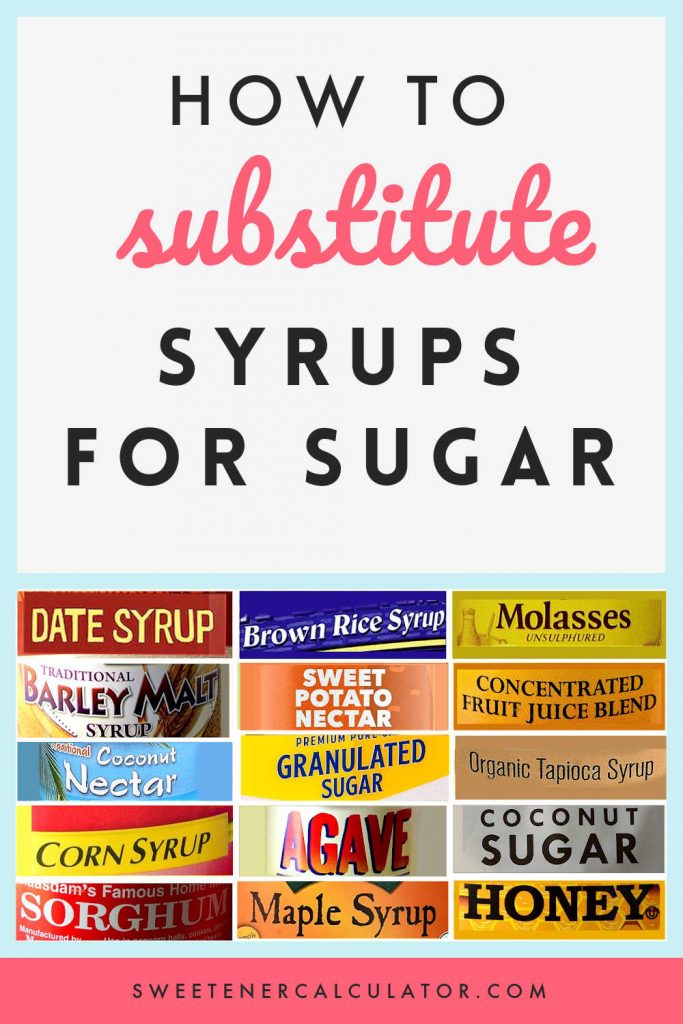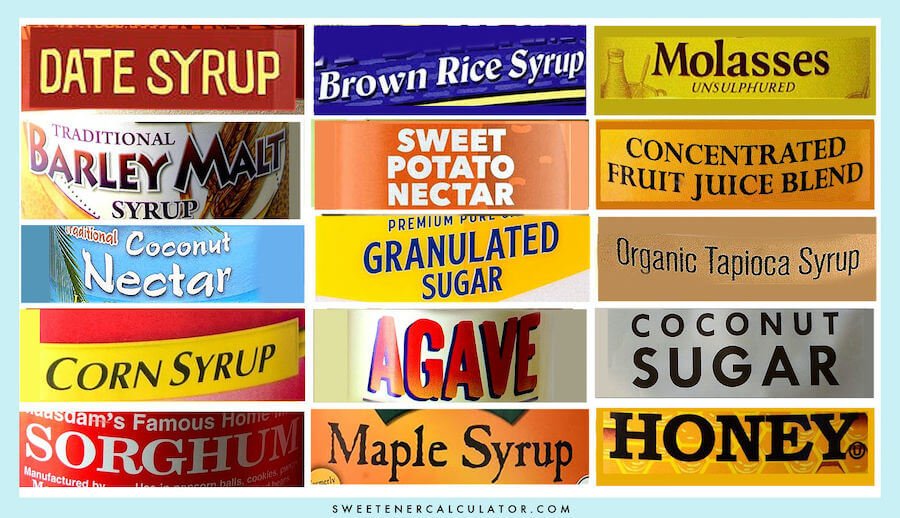Do you avoid baking with honey, maple syrup, and other syrups because you don’t know how to swap them for sugar? Check out my complete guide to substitute dry sweeteners with syrups and nectars. Swap made easy for you!
Are you ready to think beyond table sugar and start substituting it in your recipes with something more flavorful or unexpected?
Thinking about syrups and nectars?
If so, you landed on the right place! This post is your guide to replacing dry sweeteners with liquids. From coconut sugar to honey to agave, we’ll be breaking down the differences between them.
I’ll show you that whenever you replace a dry sweetener for a liquid–maple syrup, molasses, brown rice syrup– you’ll need to account for differences in sweetness, water content, flavor, and even acidity.
And because that can feel daunting, I’ll give you 6 tips to help you make those substitutions with ease.
Confused and overwhelmed by all the sweeteners in stores?
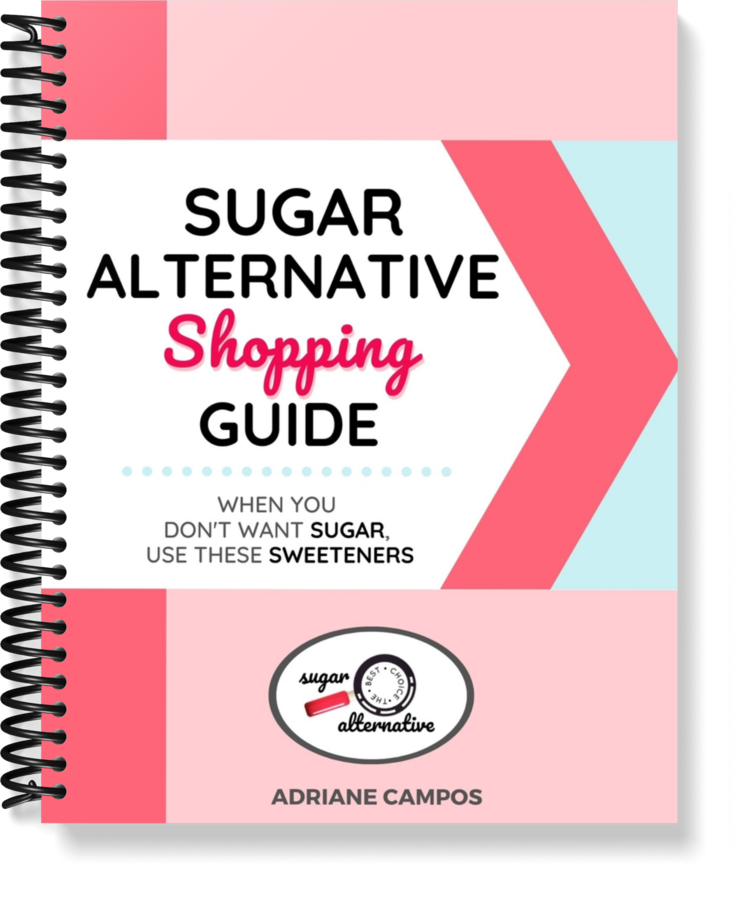 With 1000s of products sold in stores, our Sugar Alternative Shopping Guide will help you make sense of ALL the different options. It’s a goldmine—get it free for a limited time!
With 1000s of products sold in stores, our Sugar Alternative Shopping Guide will help you make sense of ALL the different options. It’s a goldmine—get it free for a limited time!
Is Syrup Better For You Than Sugar?
Because I get that question a lot, I decided to start this post by answering it. If you’re wondering, “Are maple syrup and honey healthier than sugar?” Here is what you need to know.
We’re all aware that sugars and syrups offer different taste to our foods, but they have A LOT in common when it comes to their chemistry and nutritional value.
Here are five similarities:
1) Sugars and syrups are “natural” sweeteners
Table sugar and most common sugars and syrups we find in stores are concentrated saps (fluid, nectar) from plants, such as sugarcane, sugarbeet, agave, maple trees, coconut palm tree, sorghum, and flowers.
Others may be produced by breaking down starches— from corn, brown rice, barley, or tapioca.
Sugars and syrups might also come from fruits and milk.
Being extracted from a plant or milk makes them “natural.” All are processed and refined in one way or another—raw honey is the least and white sugar is the most. You can take a closer look at them here.
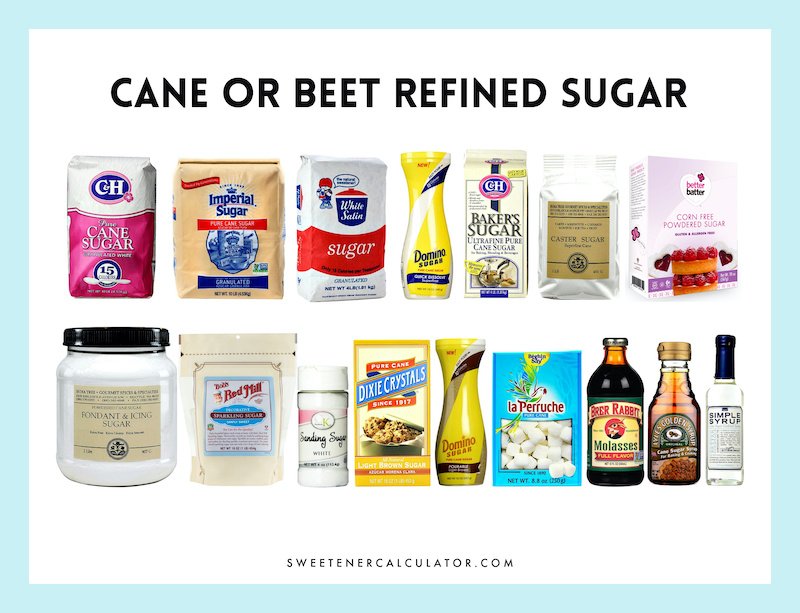
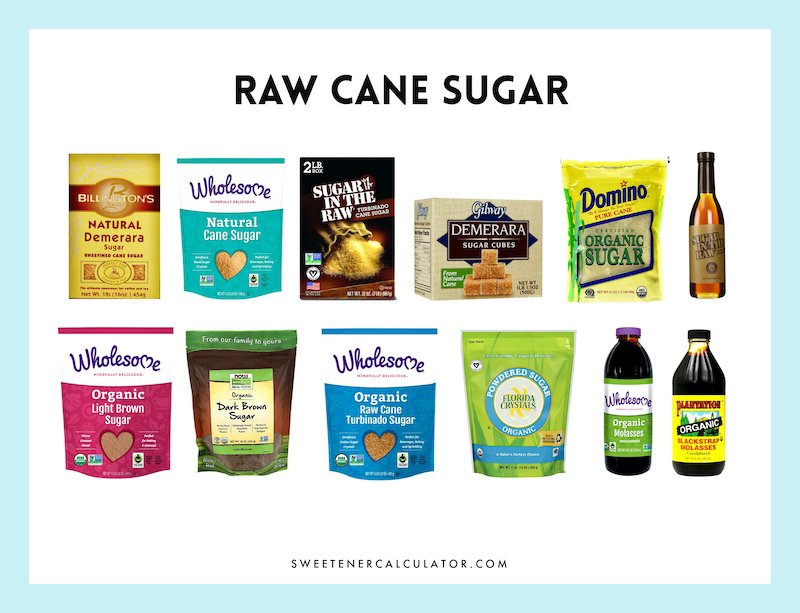
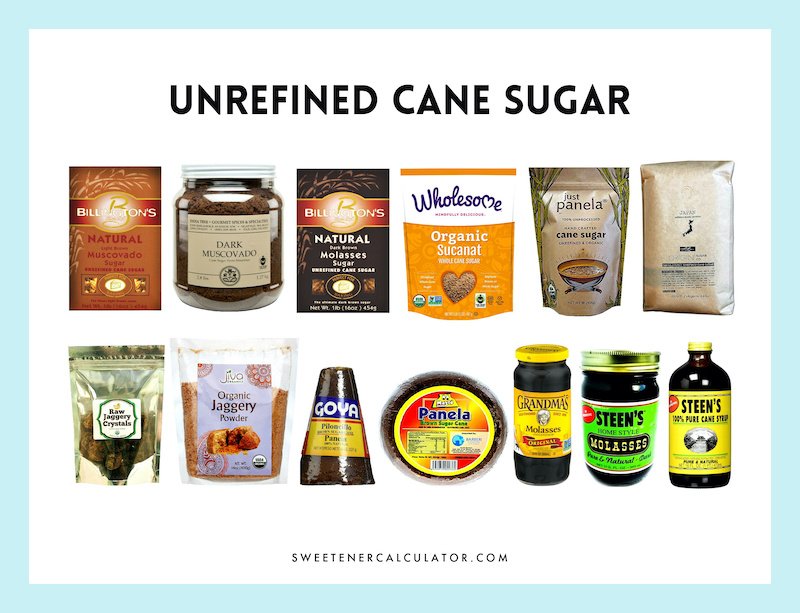
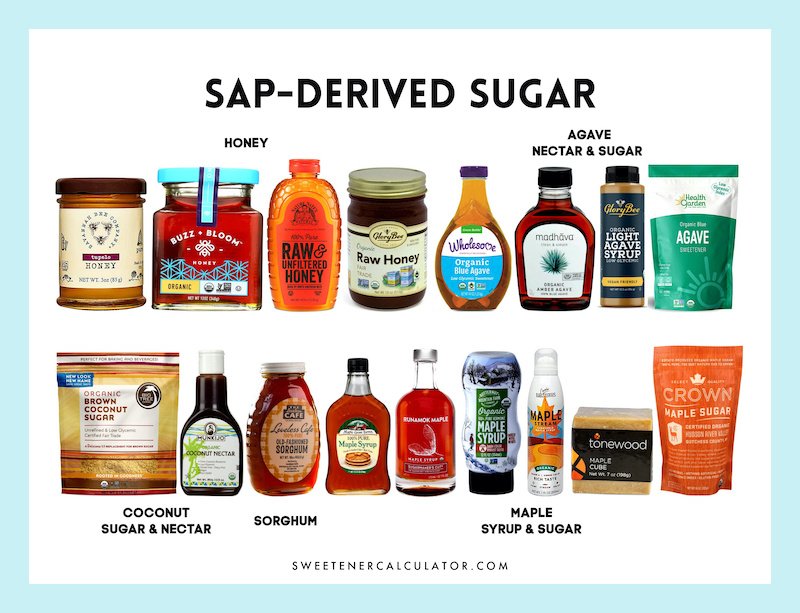
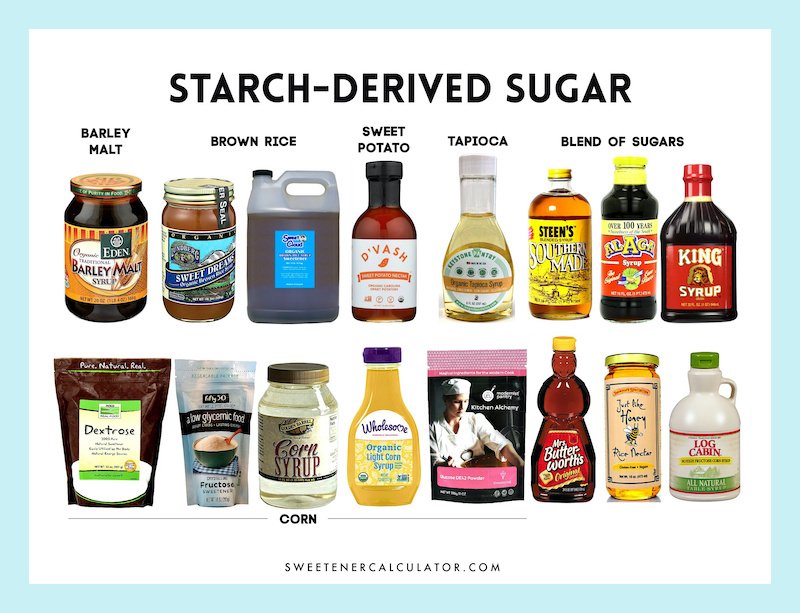

2) Sugars and syrups contain two major portions
The sweeteners we’re talking about in this post are single-ingredient sugars & syrups.
They certainly don’t affect the flavor and the texture of our foods in the same way. However, chemically speaking, they are not too different from one another.
No matter where they come from, the general formula for those sweeteners is SUGAR (sucrose, fructose, glucose) + WATER:
- Honey is about 80% sugar (mostly fructose and glucose)
- Maple syrup is about 65% sugar (sucrose)
- Agave nectar is 69 to 77% sugar (mostly fructose and glucose)
- Table sugar is 99.9% sugar (sucrose)
In all of them, the remaining component is mainly water:
- Liquid sweeteners (syrups, nectars) contain 15 to 35% water
- Solid sweeteners (granulated, powdered, cubes, tablets, blocks) have 0.03 to 7% water.
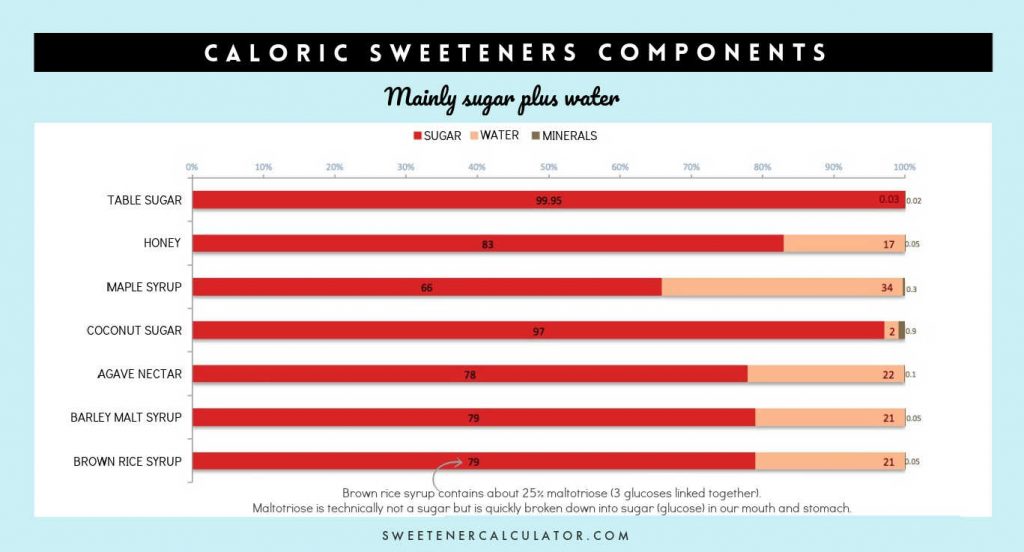
3) Sugars and syrups are simple carbs
From a food science perspective, any of those sweeteners—be it liquid or dry—is, in fact, a “sugar.”
In other words, the term sugar refers to simple carbohydrates and includes not only table sugar, but 80 other sweeteners in dry and liquid form —agave, date syrup, coconut sugar, and muscovado.
4) Sugars and syrups are called “caloric sweeteners”
They’re all called caloric sweeteners because they provide 4 calories per gram (on dry basis) as the image below shows.
- Liquid sweeteners (syrups, nectars) contain over 50% sugars and provide about 20 calories per teaspoon.
- Dry sweeteners (granulated, powdered, brown, cubes) have over 90% sugars and about 15 cal/tsp.

5) Sugars and syrups are an excellent source of energy
So, back to our original question. Are honey and maple syrup better than sugar? The answer depends on what “better” you mean.
Better taste? Better aroma? Better for baking?
If the question is “better for you” or healthy, you’re probably guessing it by now, after just reading items 1 to 4 above.
Sugars and syrups are an excellent source of energy. They offer no other nutritional benefit.
So, as they’re generally not too different from one another in terms of nutritional value, one is not healthier than the other. Of course, some are less processed and refined than others, but that doesn’t make them “better for you” or more nutritious than table sugar.
Takeaway: If you wonder which is best, sugar or syrups? I’ll tell you that to find the “best” among them, you should consider the unique taste, aroma, culinary role, and the satisfaction they offer— not their nutrition value. Syrups are not “better for you” than sugar.
How do I Replace Sugar with Syrup in Baking?
If you’re thinking, “If my recipe calls for x amount of sugar, how much of a syrup should I use? Do I need to adjust other ingredients?”
When you substitute sugar with syrup in your recipes, you have to take into consideration 3 factors:
- They contain sucrose, glucose, and fructose in various proportions, which affects your recipe’s sweetness level, moisture retention, and browning.
- They have different water content, which affects your recipe’s wet/dry ratio.
- They bring their own distinct flavors and characteristics to recipes, which contrasts with the more neutral taste of table sugar.
1) Sweetness level — sugar vs. syrup
The sweetness level of sugars and syrups is not always the same because they contain different sucrose, fructose, and glucose levels.
Sucrose is a double sugar made up of two single sugars — glucose and fructose — stuck together. Fructose is almost 50% sweeter than sucrose. Glucose’s sweetness level is about half of sucrose’s.
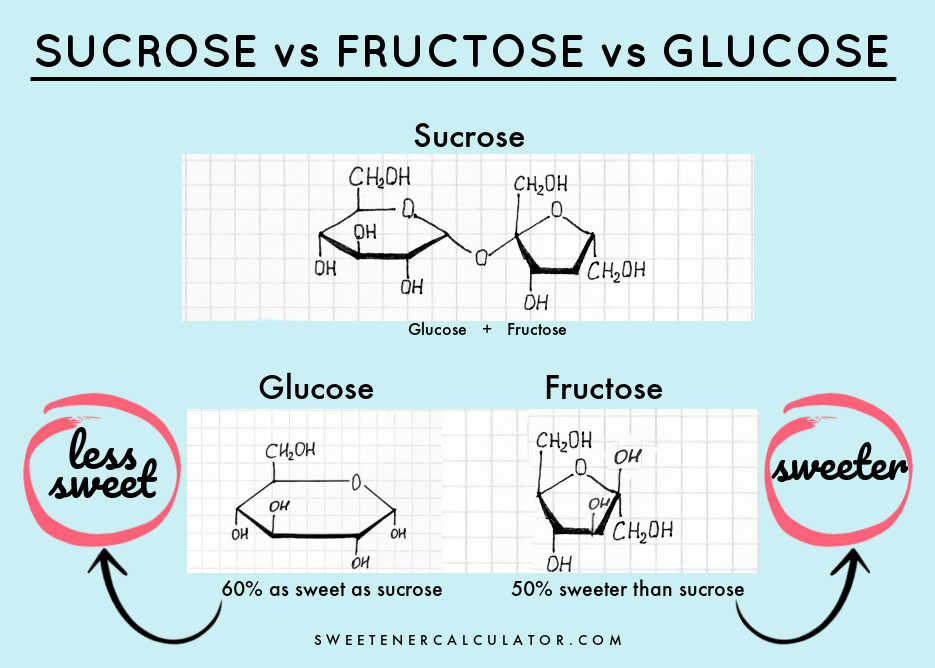
Depending on the amount of fructose and glucose, sugars and syrups might be:
• As sweet as table sugar
Table sugar is pure sucrose—half glucose and half fructose stuck together. Therefore, sweeteners made up of sucrose or with the same amount of glucose and fructose are as sweet as table sugar.
For you to have an idea, here are some sucrose-based sweeteners and the average amounts of sugars:
- Maple syrup = 66% sucrose
- Coconut sugar = 70% sucrose, 10% glucose, 10% fructose
- Refined sugar from sugarbeet or sugarcane = 99% sucrose
- Dark muscovado = 89% sucrose, 2% glucose, 2% fructose
Therefore, you replace equal volumes. For example, you can substitute 1 cup of table sugar or coconut sugar with 1 cup of maple syrup.
Note: Molasses—concentrated sugarcane syrup—is usually as sweet as maple syrup and table sugar. But depending on the molasses you have on hand, it can bring a strong and bitter taste with it. Their sweetness decreases and bitterness increases in the following order: traditional, organic blackstrap, mild, dark, blackstrap. When replacing, start with 1/2 cup of molasses for every cup of table sugar in a recipe, adjust to taste, adding increment amounts up to 1 cup.
• Sweeter than table sugar
Syrups with more fructose than glucose taste sweeter than table sugar. That’s because fructose is sweeter than sucrose and glucose.
In most varieties of honey and agave nectar, fructose is present in higher amounts than glucose. As a result, those syrups are sweeter than table sugar. So, you’ll need to use less of them to get the same sweetness level as table sugar.
- Honey = 33-40% fructose and 26-33% glucose
- Agave = 55-72% fructose and 10-26% glucose
How much less?
If you’re looking for an easy way to convert table sugar —or any other sugar— to honey or agave syrup, use my Sweetener Calculator. Enter the amount of table sugar (in tsp, Tbsp, cup, gram, or milliliter), and it tells how much of honey or agave you’ll need to measure.
For example: if your recipe calls for 1 cup of table sugar, use ¾ cup of agave or honey.
• Less sweet than table sugar
Starch-derived sweeteners such as barley malt, brown rice, tapioca, and corn syrup are fructose-free. Because they consist of mostly glucose, they are less sweet than table sugar. Consequently, you’ll need to use more of them to get the same sweetness level than table sugar.
How much more?
Use the Sweetener Calculator to find the right amount to use in place of table sugar or any other sweetener in dry form.
Takeaway: The sweetness level of sugars and syrups depends on their amount of glucose and fructose. Those with more fructose than glucose will be sweeter than table sugar. On the other hand, glucose-based sweeteners are less sweet. Sucrose-based sweeteners are as sweet as table sugar. In any case of substitution, use the Sweetener Calculator to find the right amount to use.
2) Moisture retention & browning — sugar vs. syrup
Syrups with more “free fructose” (fructose that is not stuck together with glucose) will brown faster, absorb and retain more moisture for two reasons:
- Fructose is a hygroscopic molecule (readily absorbs moisture from its surroundings), much more than sucrose and glucose. Therefore, honey and agave nectar absorb and retain more moisture, allowing baked goods to stay fresher for a longer period of time.
- Fructose undergoes browning reactions at a lower temperature (230F) than glucose and sucrose (320F), so syrups with more fructose will brown faster. Because honey and agave desserts darken more quickly in the oven than table sugar and fructose-free sweeteners (barley malt, brown rice, tapioca, and corn syrup), you’ll need to reduce the oven temperature.
A good rule of thumb is to reduce the oven temperature by 25 degrees. If the center of a baked good is not yet done, use aluminum foil to prevent over-browning on the top. Bake the food longer if necessary.
Takeaway: Baked goods made with agave and honey tend to brown more quickly than those with table sugar. So, watch the cooking time closely. Lower oven temperature called for in the recipe by 25 degrees.
3) Water content — sugar vs. syrup
When substituting syrups for granulated sugars or vice versa, keep in mind they contain different water amounts.
- Sweeteners in solid or crystallized form = 0.3 to 7 percent water.
- Sweeteners in liquid forms = 17 to 35 percent water.
The chart below shows the average amount of sugar and water in common sweeteners.
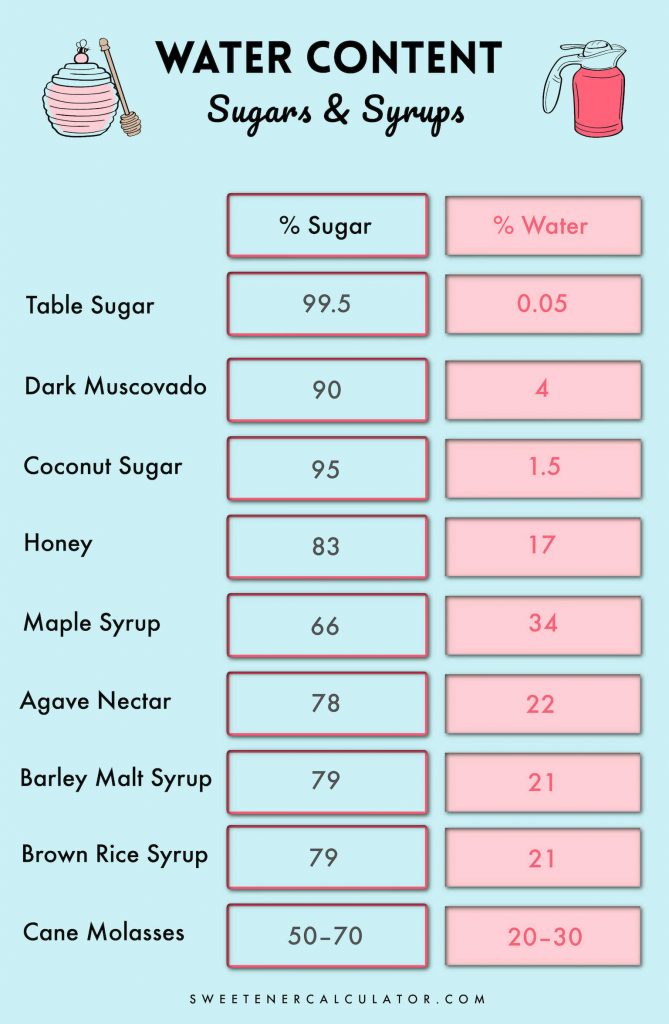
Whenever you replace a syrup for table sugar, you change the recipe’s so-called “wet/dry ratio.”
• What exactly is the wet/dry ratio?
The wet/dry ratio in a recipe is a fixed proportion of wet ingredients relative to dry ingredients. This ratio is the basis of cooking as it forms the backbone of a recipe telling us how much to use of wet ingredients (water, butter, oil, milk, cream, eggs) and dry ingredients (flour, sugar).
When swapping a dry sweetener with a syrup, you increase the recipe’s water content. To maintain the wet/dry ratio, you’ll need to reduce the overall liquid in the original recipe to compensate for the water that comes with each syrup.
• How to calculate the overall liquid to reduce in the original recipe?
If you want to calculate the amount of liquid to reduce, I’ll show you how below. But I have an easier solution and I’ll tell you later in this post [Spoiler: use my Sweetener Calculator].
To start, you’ll need to know how much water is in the syrup you have on hand. Take a look at the nutrition facts label and follow the 3 steps below:
- Subtract the serving size (grams) from the total carbs (grams). If the label shows the serving size in mL, convert it to g by using the Sweetener Calculator.
- Divide the resulting amount by the serving size (grams).
- The result multiplied by 100 is the percentage of water in your syrup.
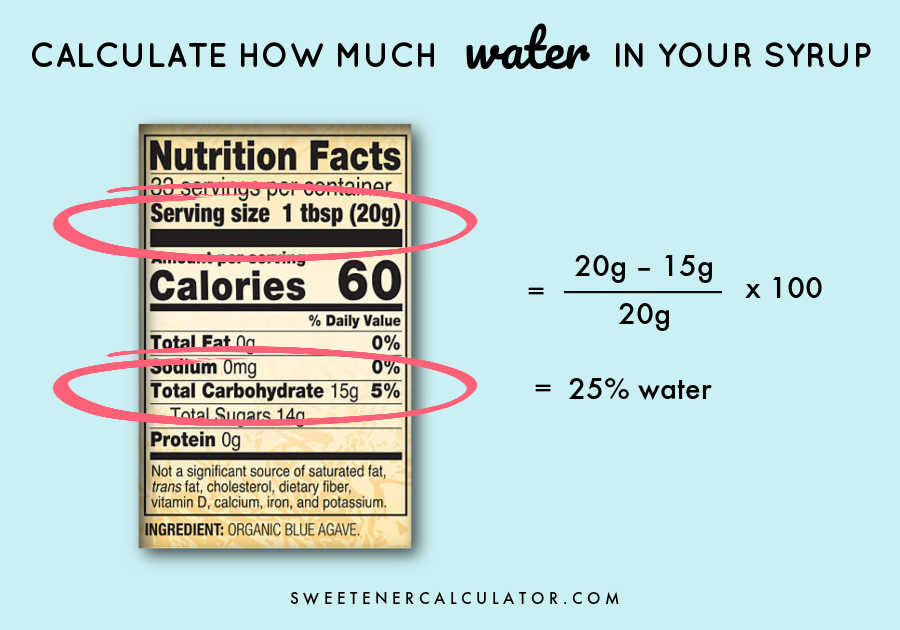
To find the amount of the overall liquid you’ll need to reduce in the original recipe, follow the 5 steps below:
- From the Sweetener Calculator, you can calculate the amount of the syrup based on how much your recipe calls for sugar
- From the Sweetener Calculator, convert the resulting volume of syrup to weight (in grams)
- Multiply the amount in g by your syrup’s water content (which you can calculate as showed above)
- Convert grams of water to milliliters of water (water has a density of 1, so 1g = 1 mL)
- That’s equal the amount of the overall liquid you’ll need to reduce in the original recipe.
I’ll give you three examples.
Let’s say your recipe calls for 1 cup table sugar, and you want to replace it with maple syrup. Here are the steps to calculate how much liquid you’ll need to reduce:
- From the sweetener calculator, 1 cup table sugar is as sweet as 1 cup maple syrup
- From the sweetener calculator, 1 cup maple syrup equals 332 g.
- Let’s say your maple syrup has 34% water, so every 100g of the syrup has 34g of water. Since 1 cup of the syrup weighs 332g, it means your syrup contains 34% of 332g or 113g of water.
- Your maple syrup adds 113g = 113mL = 1/2 cup of water to the recipe
- You’ll need to reduce ½ cup of the overall liquid in the original recipe.
To substitute honey for 1 cup sugar:
- From the sweetener calculator, you get 1 cup table sugar is as sweet as 3/4 cup honey
- From the sweetener calculator, you’ll find that ¾ cup honey equals 252g.
- Let’s say your honey has 17% water. Since 3/4 cup of honey weighs 252g, it contains 17% of 252g = 43 g of water.
- Your honey adds 43g = 43mL = 3 tablespoons of water to the recipe
- You’ll need to reduce 3 tablespoons of the overall liquid in your original recipe.
To substitute agave nectar for 1 cup sugar:
- From the sweetener calculator, you get 1 cup table sugar is as sweet as 3/4 cup agave
- From the sweetener calculator, you’ll find that ¾ cup agave equals 252g.
- Let’s say your agave has 22% water. Since 3/4 cup of agave weighs 252g, it contains 22% of 252g = 55 g of water.
- Your agave adds 55g = 55mL = 1/4 cup of water to the recipe
- You’ll need to reduce ¼ cup of the overall liquid in the original recipe.
Lucky for those not particularly good at math, you won’t need to calculate that yourself!
The Sweetener Calculator will do it for you.
It calculates the overall amount of liquid you’ll need to decrease in the original recipe if you swap a dry with a liquid sweetener.
Takeaway: To maintain the wet/dry ratio of the recipe, reduce the overall liquid. That amount is going to be different depending on the syrup you have on hand. You can calculate it yourself, as I explained above, or use my Sweetener Calculator to find out the correct amount to use.
4) Flavor & characteristics — sugar versus syrup
Each syrup brings a unique flavor and characteristics, which contrasts with the more neutral taste of table sugar. To avoid a flavor overload, go easy as you start playing with syrups. Here’s what you’ll need to consider:
• Baking goods made with syrups will have different aroma and taste
Table sugar sweetens without overpowering the taste of foods. In contrast, syrups usually bring their own distinct flavors.
If you replace table sugar in a recipe with maple syrup, molasses, or honey, you’ll add a more complex flavor.
Honey offers a flowery taste to recipes, and darker varieties tend to have a more prominent taste and aroma.
Maple Syrup’s taste and color vary depending on the grade. The darker the color, the stronger the flavor. If you want a dominant maple flavor, choose “very dark color strong taste.” The “dark color robust taste” tends to be a better replacement for regular sweeteners such as honey and table sugar. The “amber color rich taste” pairs well with bolder flavors such as chocolate and ginger. For a mild taste, go for the “golden color delicate taste.”
Cane molasses bitterness increases in the following order: traditional, organic blackstrap, mild, dark, and blackstrap.
To avoid a flavor overload in your recipe, start replacing up to half of the table sugar called for in the recipe. Always taste before baking. Adjust by adding increment amounts of the syrup or nectar.
• Baking goods made with syrups will have different texture
Syrups cannot be creamed with butter to trap air, so you’ll need to rely on chemical aeration (add extra leavening agent) alone to achieve a good rise of your baked goods.
Baked goods made with syrups tend to be chewier and denser. They work best in those that are soft-textured, like cakes.
Some syrups, such as honey, can be relatively acidic. Maple syrup is mildly acidic but less than honey.
So, if you’re substituting sugar with honey, add a 1/8 tsp of baking soda for every ¼ cup honey you use. That will help slightly heavier baked goods rise evenly and become fluffier and lighter.
As a quick reference:
- 1 cup honey, add ½ tsp of baking soda
- ¾ cup honey, add ¼ + 1/8 tsp baking soda
- ½ cup honey, add ¼ tsp of baking soda
- ¼ cup honey, add 1/8 tsp baking soda
No need to add extra leavening agent if you’re subbing less than ¼ cup honey.
Takeaway: In order to successfully learn to bake with syrups, you must be open to explore their nuances in flavor and texture. The end result is not going to taste and look exactly the same as the recipe made with table sugar. But with time, patience, and using my swapping tips you’ll be creating amazing baking goods.
Summary
Whew! That was A LOT of info. But here is a recap for you.
6 Tips for Substituting Syrups for Sugar in your Recipes
- Don’t swap syrups for sugar because you’re looking for better nutrition value. Swap because of their unique taste, aroma, culinary role, and the satisfaction they offer you.
- Always use the Sweetener Calculator to find the right amount to substitute. Because they’re not always a cup-for-cup substitute for table sugar, you might need to add less or more.
- To maintain the wet/dry ratio of the recipe, reduce the overall liquid. That amount is going to be different depending on the syrup you have on hand. Use the Sweetener Calculator to find out the correct amount to use.
- Baked goods made with fructose-based sweeteners, such as agave and honey, brown faster than those with table sugar. So, watch the cooking time closely. Lower the oven temperature called for in the recipe by 25 degrees.
- Avoid a flavor overload. Start playing with syrups by subbing up to ½ of the sugar called for in your recipe. Always taste before baking. Adjust by adding increment amounts.
- If you are substituting sugar with honey, add 1/8 tsp of baking soda for each ¼ cup of honey. That will help your slightly heavier baked goods rise evenly.
Your turn now.
Have you baked cookies, bread, cakes, or pies with liquid sweeteners?
Share your tips in the comments below.
